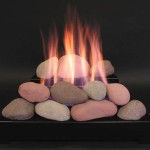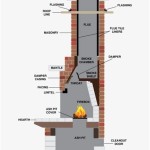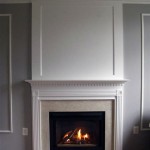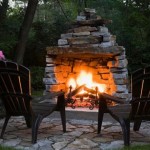Antique French Fireplaces: A Timeless Elegance
Antique French fireplaces are more than just heating apparatus; they are historical artifacts, architectural focal points, and exquisite works of art. Reflecting various periods and styles influential in French design, these fireplaces offer a unique glimpse into the past. Owning one is not merely acquiring a fireplace but possessing a tangible piece of French heritage, adding character and sophistication to any interior.
The allure of antique French fireplaces stems from their diverse range of materials, intricate carvings, and distinctive regional variations. Constructed primarily from limestone, marble, and various types of stone, these fireplaces were often handcrafted by skilled artisans, resulting in unique designs that are impossible to replicate today. Understanding the history, styles, and materials used in these fireplaces is crucial for anyone considering acquiring one.
Understanding the Historical Context
French fireplace design evolved significantly over the centuries, reflecting the changing tastes and architectural movements. From the grand, ornate designs of the Louis XIV era to the more restrained elegance of the Directoire period, each style embodies the prevailing aesthetic sensibilities of its time.
The 17th and 18th centuries, particularly the reigns of Louis XIV, Louis XV, and Louis XVI, are considered the golden age of French fireplace design. During this period, fireplaces became increasingly elaborate, incorporating intricate carvings, decorative moldings, and luxurious materials like marble and gilt bronze. These fireplaces were not just functional elements but also statements of wealth and status, reflecting the opulent lifestyle of the French aristocracy.
The Louis XIV style, characterized by its grandeur and Baroque influences, featured massive proportions, elaborate carvings, and classical motifs. Fireplaces from this era often showcased allegorical scenes, mythological figures, and intricate floral patterns. The use of rich, dark marbles, such as black or red marble, was also common.
The Louis XV style, also known as Rococo, emphasized asymmetry, fluidity, and delicate ornamentation. Fireplaces from this period featured flowing curves, shell motifs, and floral garlands. Lighter marbles, such as white or light gray marble, were preferred, and the overall effect was one of grace and elegance.
The Louis XVI style marked a return to Neoclassical principles, with a focus on symmetry, balance, and clean lines. Fireplaces from this era featured simpler designs, with geometric patterns, fluted columns, and restrained ornamentation. White marble was the dominant material, and overall aesthetic exuded a sense of refinement and sophistication.
The Directoire period, which followed the French Revolution, was characterized by a more austere and functional style. Fireplaces from this era were typically smaller in scale and featured simpler designs, reflecting the changing social and political climate. The use of local limestone and other readily available materials became more prevalent. Later, the Empire style, emerging under Napoleon, brought back some grandeur, but with a strong emphasis on military motifs and classical Roman influences.
Key Materials and Craftsmanship
The materials used in antique French fireplaces played a crucial role in their aesthetic appeal and durability. Limestone and marble were the most common materials, each offering unique characteristics and visual qualities. Understanding the properties of these materials and the craftsmanship involved in their creation is essential for appreciating the value of these fireplaces.
Limestone, a sedimentary rock composed primarily of calcium carbonate, was widely used in fireplace construction due to its abundance, workability, and natural beauty. French limestone, known for its warm tones and subtle variations in color, imparted a rustic and charming character to fireplaces. It was particularly popular in rural areas and for fireplaces designed in a more informal style. The ability to carve intricate details into limestone allowed artisans to create unique and personalized designs.
Marble, a metamorphic rock formed from limestone under intense heat and pressure, was prized for its luxurious appearance, durability, and variety of colors and patterns. French marble, including varieties such as Carrara marble, Bardiglio marble, and Rouge Royal marble, imparted a sense of elegance and sophistication to fireplaces. Marble fireplaces were commonly found in grand homes and palaces, reflecting the wealth and status of their owners. The smooth, polished surface of marble enhanced the intricate carvings and decorative details, creating a visually stunning effect.
The craftsmanship involved in creating antique French fireplaces was exceptionally high. Skilled artisans, often trained for years in specialized workshops, meticulously carved and shaped the stone or marble, paying close attention to every detail. The process involved a combination of hand tools, such as chisels, mallets, and rasps, and specialized techniques, such as polishing, carving, and gilding. The dedication and skill of these artisans resulted in fireplaces that were not only functional but also works of art.
Identifying Authentic Antique Fireplaces
The market for antique French fireplaces is filled with reproductions and imitations, making it crucial to distinguish authentic pieces from modern interpretations. Several factors can help in identifying a genuine antique fireplace, including the materials used, the style of carving, the presence of wear and tear, and the provenance of the piece.
The type of stone or marble used is a primary indicator of authenticity. Authentic antique fireplaces typically exhibit the characteristics of aged stone, such as subtle variations in color, natural imperfections, and a patina that develops over time. Reproductions often lack these characteristics, appearing too uniform and pristine. Examining the stone or marble closely for signs of aging and wear is essential.
The style of carving and ornamentation can also provide clues about the age and authenticity of a fireplace. Authentic antique fireplaces often feature hand-carved details, which may exhibit slight imperfections and variations. Reproductions, on the other hand, are often machine-made and lack the character and depth of hand-carved designs. Comparing the carving style to known examples from different periods can help determine the age and origin of the fireplace.
The presence of wear and tear, such as chips, cracks, and stains, is another indicator of authenticity. While excessive damage may detract from the value of a fireplace, some degree of wear is expected in a piece that is over a century old. Repairs and restorations are common in antique fireplaces, but it is important to assess the quality and extent of these repairs to ensure that they do not compromise the integrity of the piece.
Tracing the provenance of a fireplace, if possible, can provide valuable information about its history and authenticity. Provenance refers to the documented ownership history of an object, which can help establish its age, origin, and value. Consulting with antique dealers, historians, and experts in French decorative arts can also provide valuable insights into the authenticity and value of an antique fireplace.
Acquiring an antique French fireplace represents a significant investment, requiring careful consideration and due diligence. By understanding the history, styles, materials, and craftsmanship associated with these fireplaces, it is possible to make an informed decision and acquire a genuine piece of French heritage that will enhance the beauty and character of any home.

French Provence Limestone Fireplace Gothic

White Ornate French Fireplace Mantel Decor

Antique French Louis Xvi Empire Fireplaces

French Fireplace Antique Fireplaces

Marble Fireplaces French Versailles White Fireplace Mfp 114 Fine S Gallery Llc

Antique French Nero Marquina Marble Fireplace Mantel Circa 1880 Ruby Lane

50 French Fireplaces To Add Chic Your Space Digsdigs

Antique Fireplace Before After French Country Cottage

Lavoux Dore French Limestone Antique Fireplace From Netherlands Stonecontact Com

Beautiful French Style Estate Carrara Marble Fireplace Mantel Jx61








